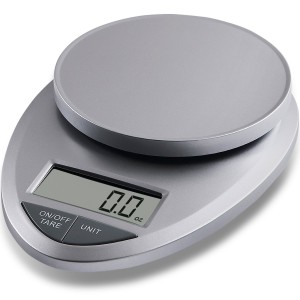 Building a balanced meal is ultimately important to your success. The first principle you must adopt is to not get caught up in counting calories. You need to focus on portions.
Building a balanced meal is ultimately important to your success. The first principle you must adopt is to not get caught up in counting calories. You need to focus on portions.
A portion is one serving and is about the same size as the palm of your hand. Honestly we’ve gotten so used to eating much larger portions than we actually need because of the “all-you-can-eat” buffets and super-sized menus offered…we need to get “real” again.
Next, you need to focus on selecting a quality source of lean protein and balance it with equal quantity of complex carbohydrates. Add to this one or more main course vegetable portions along with a healthy leafy, green such as a fresh salad. Your goal should always be to have meals that include at least 50 percent vegetables…whether raw or cooked.
Next you want to focus on your fats and you do this by eliminating the bad fats from your day rather than focusing on finding a source of good and essential fat in your day (not in each meal).
You should always try and avoid the fattest cuts of meat, full fat dairy products such as cheese, milk and butter. Healthy olive oil is allowed on salads, to use in your stir-fry or you can simply opt for a handful of nuts as a snack.
Remember when we talked about “clean eating” that you are adopting “lifestyle” changes…not temporary terms. This is a “diet” you can thrive on…not just survive on.
Your balanced meal should consist of:
Protein as your main portion and center piece
Protein portion should be the size of your palm which is usually around 4-6 oz.
Balance your protein with equal portions of accepted carbohydrates (starchy carbohydrate serving is ½ cup…for example: a serving of brown rice is ½ cup cooked rice…not a huge mound that can actually turn into 2-3 servings).
Include a serving of healthy, essential fats daily (not at every meal)
At least one to two servings of vegetables twice daily
All you meals should be balanced and a regular size dinner plate would include ¼ protein, ¼ complex carbohydrate and ½ fibrous vegetables.
Just because you’ve adopted the “clean eating” lifestyle does not mean you’ve been given a blank check to consume as much as you want as long as what you are eating is considered “clean foods.”
Your actual goal and target calories to reach that goal will help determine your portions.
If your goal is to lose some excess body fat you need to structure your meals in order to stay within your allotted calorie range that results in a slight calorie-deficit by the end of your day.
On the flip side, if your goal is to gain lean tissue like muscle, you’ll actually consume more calories than your body requires for maintaining itself. If you truly want to experience successful weight control, you must focus on compliance to a calories deficit not just compliance to a food list.
Eating the right foods is not enough. You need to be eating the right foods in the right amount. If you consume only foods that are on your “clean nutrition program” but you eat too many of these “clean” foods, you’ve counter-acted all the good you’ve done, put your goals at serious risk and likely will still gain fat and weight.
Be aware that you will easily eat more food than you need if you are overestimating your servings or portions sizes so it’s imperative that you pay close attention to portions especially in the beginning. The best idea to make sure you are serving the correct portions is to invest in a food scale and weigh out your portions (you can easily purchase a food scale online or in your favorite store…they are not expensive but help so much). You should also use a calories tracking program that will allow you to get a real sense for your portion sizes, the energy you are consuming in food, how much you are expending with activity and exercise levels.
If you don’t currently own a food scale you can use these eyeball measurements…
For one serving:
3-4 oz meat = deck of cards
Whole fruit = baseball
Rice = ice cream scoop
1 oz. cheese = 2 dice
Cooked vegetables = ½ cup
Fibrous vegetables = 1 cup
Pasta = size of CD
Bread = 1 slice (80 calories)
Peanut Butter = Size of walnut in shell
Once you’ve gone through your initial period of a few weeks you will have re-calibrated your sense of what a correct portions should be and can usually eyeball portions accurately.
It’s never too late to change when it comes to your health.
If you are serious about achieving a truly healthy lifestyle that will take care of you long into your senior years visit “Reclaim Your Longevity” . Everything you need to live a long healthy life…dancing well into your senior years is included in my new program that is geared towards helping you to find the “fountain of youth.”
Speak Your Mind